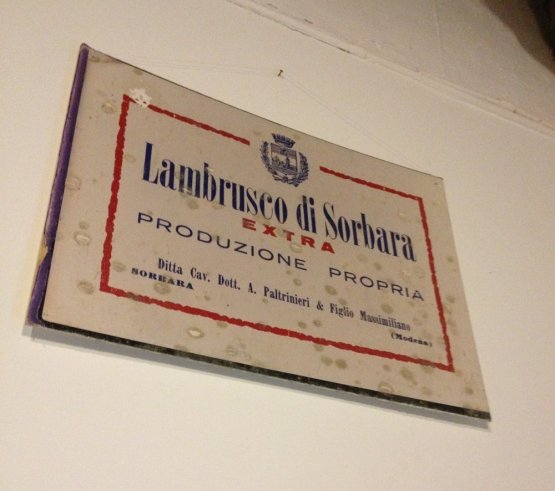Usually, when working with wine is repeated generation after generation, people often say that since they were children, the air was filled with the scent of must. As if inheriting a passion for a job came naturally. As if being born a couple of steps from the vineyard meant you were predestined. Sorbara (near Modena) 1926. Your grandfather began producing wine, your father went on, and what will you do? When Alberto Paltrinieri, aka Paltro for almost everyone, tells us of when his father gave him the winery to run, he looks nothing like his wines. No fizz, he’s still as the most serious of Sangiovese based wines; except he produces Lambrusco. The work in the vineyard, in the cellar, the Charmat method, were always part of his life, but for one who loved philosophy and history of art, more than anything, they had nothing poetic about them.

"Being a vine-dresser and growing passionate about this work has been a slow process. My parents had no pretence and forced nothing, but at some point I had to start from what I had, and not from what was missing". If you met him, you’d have a hard time in believing that a man with such a broad face and such broad hands hadn’t insisted and patiently waited for time to persuade him of the goodness of the road that was leading him exactly there.
He spent three years on his father’s payroll, as any employee. Then his father did something that today would be a breaking news for any press agency: he left his job. He put everything in his son’s name and let him work as he wished. So much so that when Paltro wanted him to taste the wine that was ready to be bottled, he had to take his father a glass back in the house. So even though it may not have been love at first sight, that between Paltro and his wine, it is certainly true love by now. The most free of loves. A love that was not assigned, but discovered, and now it is nourished.
"When I graduated in Agricultural Studies, we were only producing one kind of Lambrusco, all naturally fermented in bottle". Today,
Cantine Paltrinieri’s 15 hectares +39.059.902047, in the area of Cristo in Sorbara, in the fertile grounds between river Secchia and Panaro, give life to 6 different Lambruscos.
Radice, a 100% Sorbara that follows the tradition of bottle re-fermentation.
Leclisse, in which the same grapes undergo a long refermentation in stainless steel tanks. The result? A sour cherry and wild strawberry lollipop, with a decisive acidity. Then there’s
Sant'Agata, 100% Sorbara produced with the Charmat method.
Greto and Piria are characterised by the use of Lambrusco Salamino, which the law forces to use every three rows of Sorbara vines, due to the “sexual” issues of the latter. Grosso is the fruit of another coup de theatre caused by Paltro’s frankness. One involving Christian Bellei, a wine producer in Bomporto (Modena), whose father dared to create the first Lambrusco Metodo Classico. Paltro had the nerve to ask him to teach him how to degorge the wine. They are now great friends. When the Grosso label was presented to the press, there were journalists and also Bellei. Some thought it was shocking, others accepted the great novelty: that men who never ask for anything have left place to those who are not afraid to ask at any time.